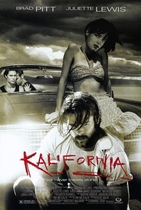Our editor-in-chief Nate Yapp is proud to have contributed to the new book Hidden Horror: A Celebration of 101 Underrated and Overlooked Fright Flicks, edited by Aaron Christensen. Another contributors include Anthony Timpone, B.J. Colangelo, Dave Alexander, Classic-Horror.com's own Robert C. Ring and John W. Bowen. Pick up a copy today from Amazon.com!
Urban Legends: Final Cut (2000)
What it may lack in atmosphere and unprecedented ideas, Urban Legends: Final Cut (ULFC) more than makes up for in (yes it's cliche for this subgenre by now) its "postmodern" self-reference which obtains on many different levels, its technical craft and its entertaining story.
First, let's get this out of the way: many horror fans, if not the majority of them born before the mid-1980s, hate this subgenre of "90's teen slasher flicks" or whatever we want to call it. To them, I'm sure that my reviewing ULFC, and any of its predecessors, as more than "so-bad-its-good" is tantamount to sacrilege at best and stupidity at worst. There are many and complex reasons that I think there is a hatred for the subgenre, but relaying all of them would take at least a lengthy essay. For now, let it suffice to say that I don't hate the subgenre; I try to view films with as "objective" an eye as I can. I also don't approach horror as if there are preconceived things that horror films must do, as horror films, or they suck. I don't require anything other than I require from other genres. What makes them horror films is their subject matter, primarily.
ULFC's first creative triumph, and perhaps first lodged wrench in the gears of preconceptions for those who can't let go of them, is that it isn't a sequel to Urban Legend (UL) in the traditional sense. The killer from UL doesn't return to Pendleton, or another school, and start killing people to match urban legends again. That would be a traditional sequel, and would have been easiest for the writers to crank out. Rather, ULFC approaches its sequel status conceptually. It occurs in the same universe as UL and even has Reese Wilson return as a more literal link, it occurs at another college (a thematic link), and the plot wraps itself around urban legends in various ways (the conceptual link), since the first film featured the urban legend serial killer and was supposed to be an urban legend itself (which is the reason Brenda, at the end of UL, says "let me tell you how it really happened"). and the primary student film featured in ULFC is sort of a fictional attempt at UL as suggested to our heroine by Reese. Conceptual sequels are rare, probably because they inexplicably tend to confuse filmgoers, who tend to hate them because of it. And yes, I am fond of Halloween III, just in case you're wondering.
In ULFC, we meet a band of student filmmakers. It begins with a film inside the film, although we don't know that for the first few minutes, with a schlocky student slasher set on an airplane and manifesting a few urban legends, although not so self-consciously. After we learn that we're watching a film within a film, we quickly meet the other principles, who attend the unnamed, infamous school housed in the Orson Welles Film Complex and who are all competing for the annual "Hitchcock Award," which has traditionally lead to an ensured measure of success in the industry. As you might guess, someone is killing off students, and it seems to have something to do with the competition. That is what makes ULFC a slasher, after all.
No, it isn't an unprecedented idea to place films within films, and most glaringly, Scream 3 just used a similar tactic, but ULFC doesn't pretend that it's an unprecedented idea. Rather, the whole of ULFC unfolds like one, self reference of self reference of . . . of the film industry and particularly genre films. There are references to "The Twilight Zone", Vertigo, Blair Witch Project and a whole host of other films that I'm not even aware enough to recognize. It's a guess, but I'd bet that every scene is really a reference to some other film. It's a clever idea as realized, and deepens the theme both literally and more subtly, as ULFC is primarily about films within films and the urban legends that are created by films themselves.
Like most of the other 90s teen slashers, ULFC is also a mystery. We don't know who the killer is until the last 10 minutes or so. Director John Ottman (who primarily worked as a composer for many great genre films prior to ULFC) effectively keeps you guessing. The revelation of the killer is clever and his motivation as brilliantly ridiculous as the killer's motivation in UL.
There are a few minor flaws, however. One was the atmosphere, which tends to be a bit sterile at times. The other was a bit of sloppy editing that made the flow of a scene or two confusing in context for a moment. Admittedly, these are pretty subjective complaints, but I couldn't help experiencing them. Many scenes do have effective atmosphere--such as the excellent recording studio and mine train sequences, and for the most part the plot kept me entertained. The young, mostly unknown cast, does an excellent job, and the cinematography, score, lighting, etc., are all above average.
If you hate all the other 90s teen slashers, ULFC probably won't make a convert of you, maybe nothing would. If you have a more even-keeled view, ULFC has a lot to offer, even if it's not perfect.








